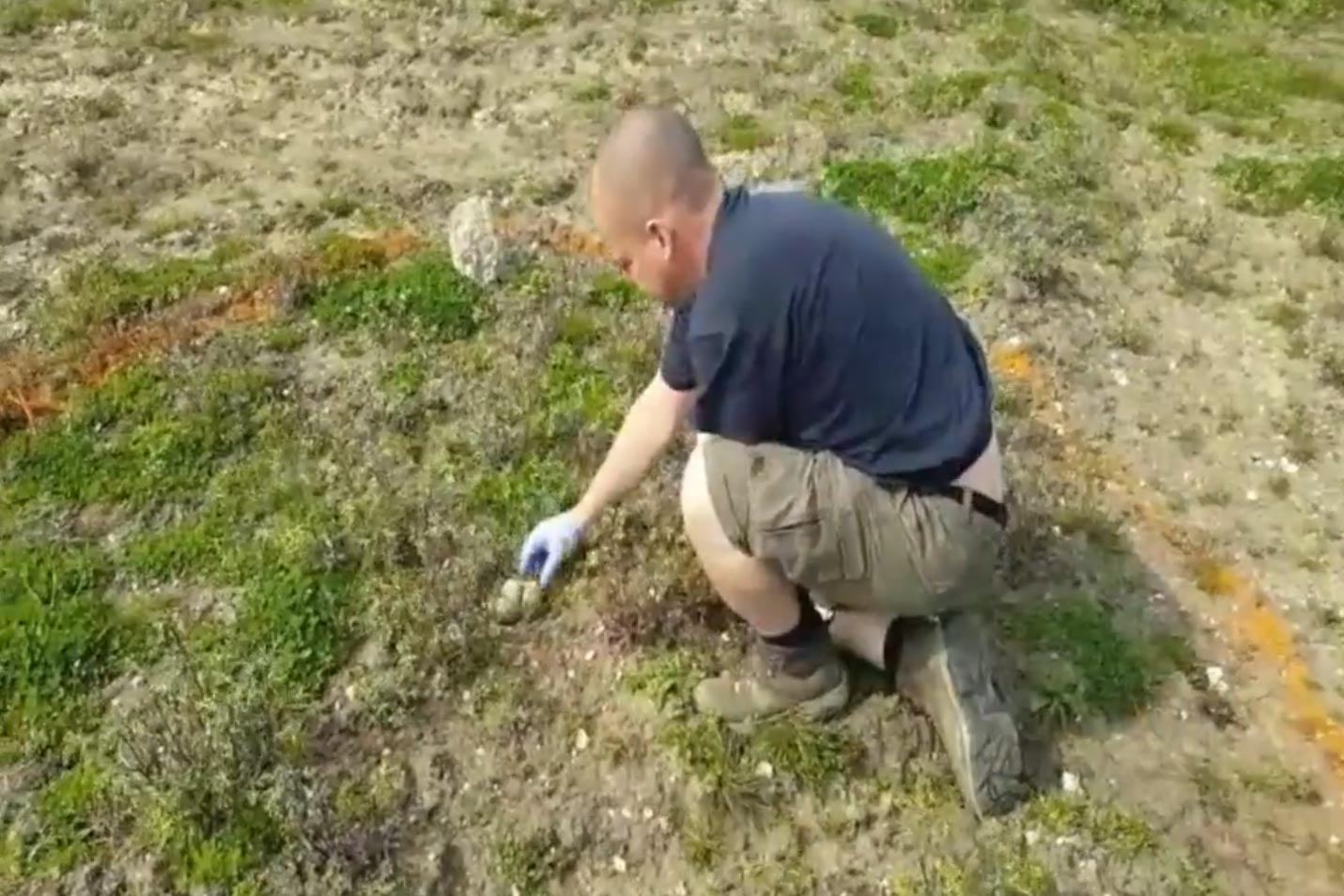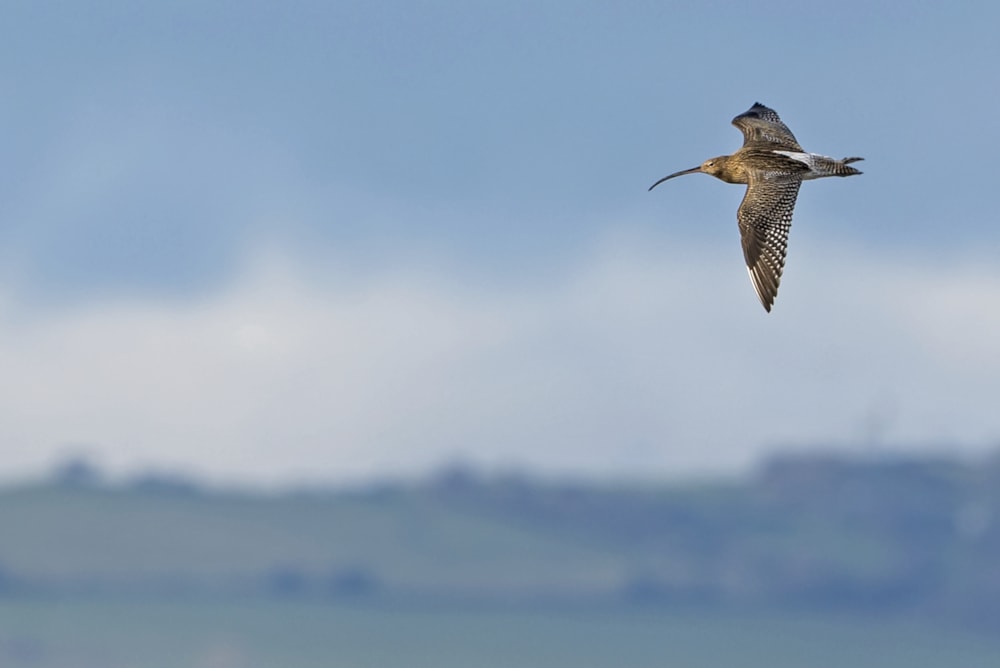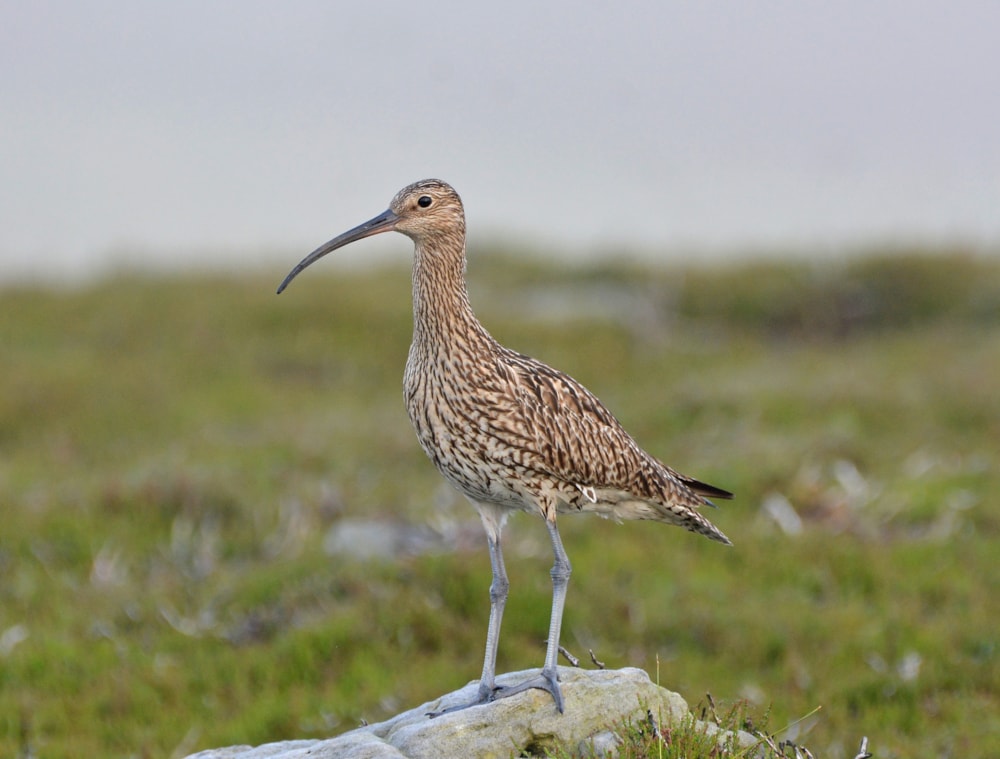Military base curlew eggs collected for headstarting
Dozens of Eurasian Curlew eggs have been saved from RAF airfields as part of the first-ever joint effort between the Wildfowl and Wetlands Trust (WWT), the Ministry of Defence (MoD) and Natural England to boost the species' numbers in parts of lowland Britain.
Under normal circumstances, the eggs from nests near military runways would have been destroyed under an individual licence to protect flight safety.
Instead, the eggs were transported to Slimbridge WWT, Gloucestershire, to be hand-reared and released into the Severn Vale. It's hoped they will help to recover the fragile population in the area.

WWT's Mark Roberts collects Eurasian Curlew eggs from an RAF air base for headstarting (WWT).
UK Eurasian Curlew numbers have declined by 60 per cent over the past 30 years and it is now considered the biggest bird conservation priority in the country. While numbers are slightly healthier in the uplands of northern England and Scotland, only hundreds of pairs remain in southern England, Wales and Ireland, where declines have been particularly marked.
Nigel Jarrett, Head of Conservation Breeding at WWT, said: "It's an exciting opportunity for everyone involved. On one hand, curlews at East Anglian air bases pose a potential risk to aviation, but on the other hand they have the potential to help their struggling cousins in the South-West.
"Unfortunately time is not on our side, but by babysitting these chicks until they can fly, we can help encourage a new generation of British curlews in the lowlands."
If it proves to be a success, the new curlew trial could provide a major boost to the species' conservation in southern England and East Anglia while still minimising the risks of serious air safety incidents.
A spokesperson for the MoD added: "Fast-jet airfields are carefully managed to deter large and flocking birds and reduce the risk of bird-strike, but curlews seem very keen to nest on them in East Anglia, probably due to perceived safety from predators and lack of other suitable habitats in the landscape. The MoD and its contractors are very happy to support this 'pilot project' and to contribute to the conservation of this iconic species."

Eurasian Curlew has declined by 60 per cent in the UK over the past 30 years (Martyn Jones).
WWT conservationists will 'headstart' the curlews, by hatching the eggs in incubators, then protecting the chicks in outdoor aviaries until they are old enough to fly. They will then be released at specially selected sites. WWT has already used the technique to boost Black-tailed Godwit numbers in the UK and Spoon-billed Sandpiper numbers in Russia; it is also working with Curlew Country, which first headstarted curlews in Shropshire in 2017 and recently announced that one of its birds had returned to its natal home.
The Eurasian Curlew decline in the lowlands seems to be caused by long-term changes in the way the countryside is managed. Because the species often nests in silage fields, the eggs and chicks are prone to being destroyed by farm machinery. Even more importantly, the eggs and chicks suffer extremely high rates of predation, particularly from foxes and crows, which are more abundant in Britain than elsewhere in Europe.
Natural England's Chair, Tony Juniper CBE, commented: "In many parts of England, Eurasian Curlew is now very scarce and if their decline continues there is a real danger that in the future people will not be able to enjoy these wonderful birds. Releasing captive-reared curlews to areas where they have disappeared, while at the same time helping to ensure airfield safety, is an example of the kind of positive partnership that we know is needed if we are to reverse the declining fortunes of many of our wildlife species."
In the long term, conservationists aim to restore wetland and species-rich grassland habitats and reduce the impact of climate change to enable curlews to recover to sustainable levels in the UK. They are also researching ways to reduce the impact of predators on ground-nesting birds.

It is hoped that headstarting and habitat restoration will mean that Eurasian Curlew has a brighter future in the UK (Damian Money).

